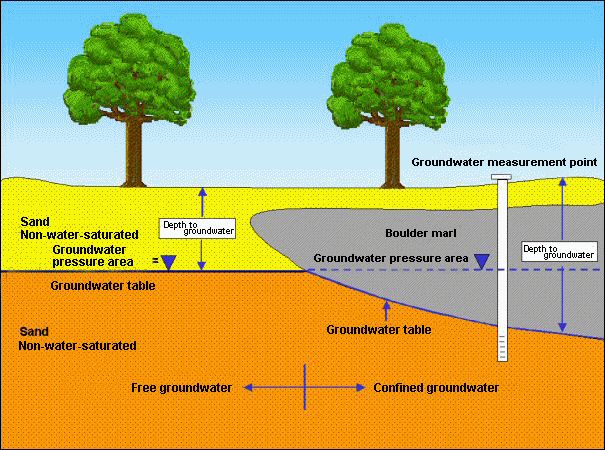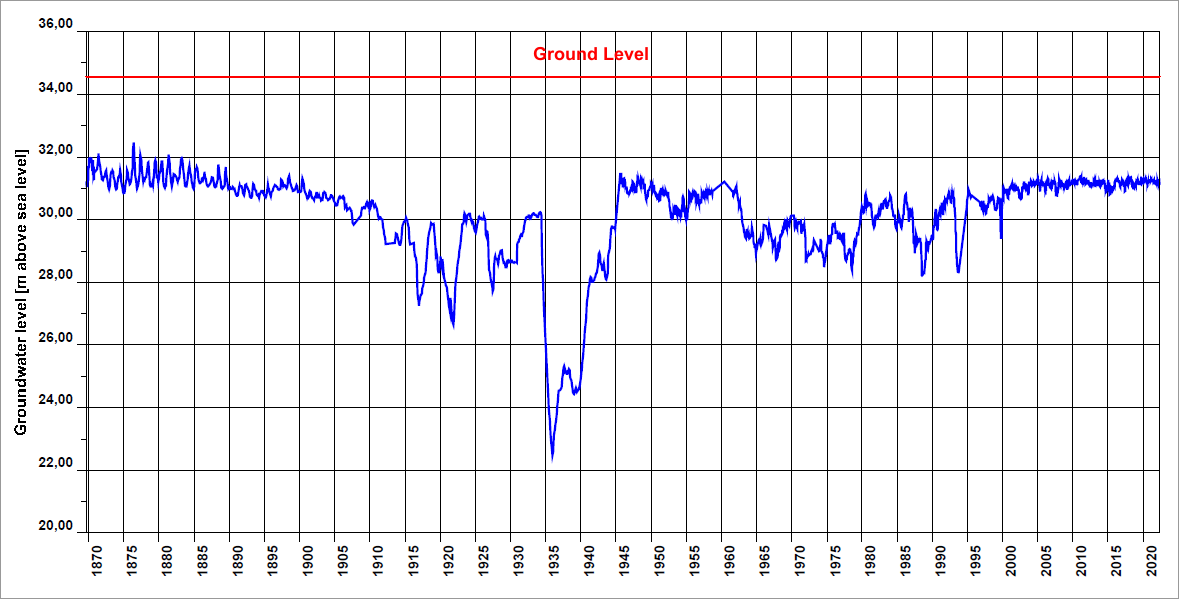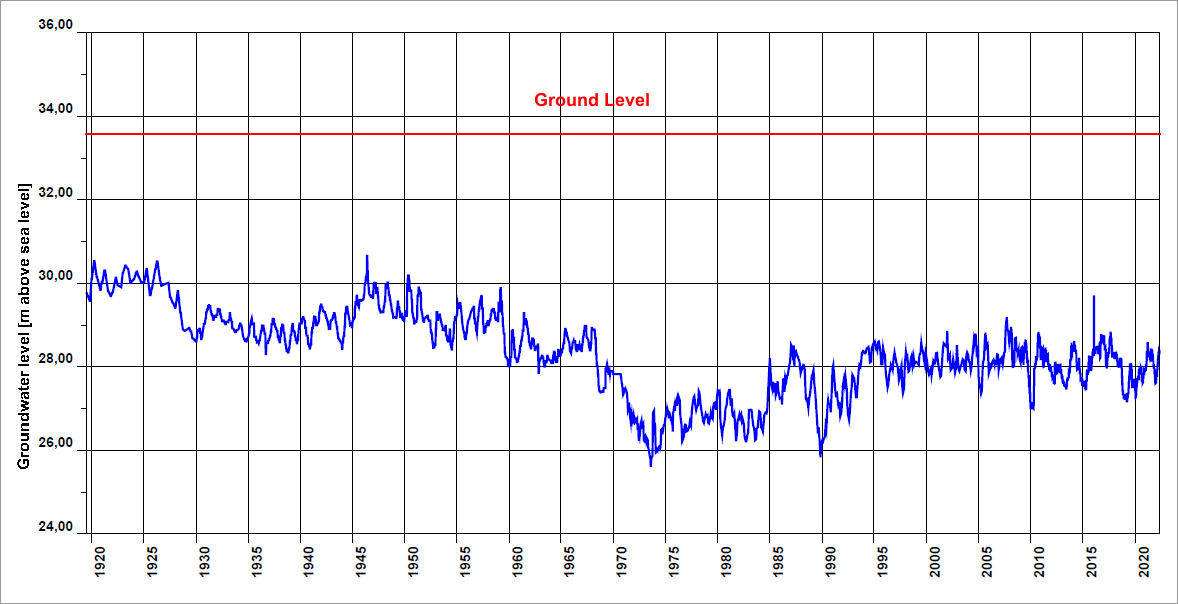Groundwater levels in a metropolitan area like Berlin not only depend on natural factors, such as precipitation, evaporation, and underground runoff, but are also strongly influenced by human factors, such as groundwater withdrawal, construction, surface permeability, drainage facilities, and recharge.
The main reasons for withdrawal are the groundwater production by public water suppliers, private groundwater withdrawals, and groundwater extraction at construction sites. Groundwater recharge occurs primarily through precipitation (cf. Map 02.17), shore filtration, artificial recharge with surface water, and the return of surface water to groundwater as part of construction measures.
Berlin has two groundwater storeys. The lower storey carries salt water and is hydraulically separated from the upper storey by about 80 metres of clay, with the exception of isolated holes in the clay layer. The upper storey carries freshwater and has an average thickness of 150 metres. It is the source of Berlin’s drinking (potable) and industrial (non-potable) water supply. This storey consists of loose sediments, alternating between permeable and cohesive sediments. Sand and gravel (permeable layers) form groundwater aquifers, while clay, silt, boulder marl and gyttja (cohesive layers) act as aquitards (SenGUV 2007).
How deep the groundwater surface lies in the subsoil varies depending on the (usually slight) groundwater gradient and the terrain morphology (cf. Fig. 1).



